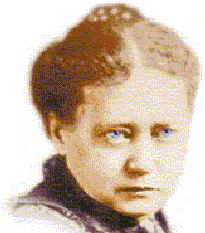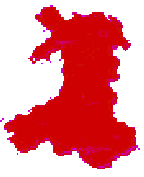H
P Blavatsky
Antiquity of the Vedas
First Published 1879
A journal interested like the
Theosophist in the explorations of archæology and
archaic religions, as well as the study of the occult in nature, has to be
doubly prudent and discreet. To bring the two conflicting elements – exact
science and metaphysics – into direct contact, might create as great a
disturbance as to throw a piece of potassium into a basin of water. The very
fact that we are predestined and pledged to prove that some of the wisest of
Western scholars have been misled by the dead letter of appearances and that
they are unable to discover the hidden spirit in the relics of old, places us under
the ban from the start. With those sciolists who are
neither broad enough, nor sufficiently modest to allow their decisions to be
reviewed, we are necessarily in antagonism. Therefore, it is essential that our
position in relation to certain scientific hypotheses, perhaps tentative and
only sanctioned for want of better ones – should be clearly defined at the
outset.
An infinitude of study has been bestowed by the
archaeologists and the orientalists upon the question
of chronology – especially in regard to Comparative Theology. So far, their
affirmations as to the relative antiquity of the great religions of the
pre-Christian era are little more than plausible hypotheses. How far back the
national and religious Vedic period, so called, extends – "it is
impossible to tell," confesses Prof. Max Müller;
nevertheless, he traces it "to a period anterior to 1,000 B.C.," and
brings us "to 1,100 or 1,200 B.C., as the earliest time when we may
suppose the collection of the Vedic hymns to have been finished." Nor do any other of our leading scholars claim to have finally
settled the vexed question, especially delicate as it is in its bearing upon
the chronology of the book of Genesis. Christianity, the direct outflow of
Judaism and in most cases the State religion of their respective countries, has
unfortunately stood in their way. Hence, scarcely two scholars agree; and each
assigns a different date to the Vedas and the Mosaic books, taking care in
every case to give the latter the benefit of the doubt. Even that leader of the
leaders in philological and chronological questions – Professor Müller, hardly twenty years ago, allowed himself a prudent
margin by stating that it will be difficult to settle "whether the Veda is
'the oldest of books,' and whether some of the portions of the Old Testament
may not be traced back to the same or even an earlier date than the oldest
hymns of the Veda." The Theosophist is, therefore, quite warranted in
either adopting or rejecting as it pleases the so-called authoritative chronology
of science. Do we err then, in confessing that we rather incline to accept the
chronology of that renowned Vedic scholar, Swami Dayánund
Saraswati, who unquestionably knows what he is
talking about, has the four Vedas by heart, is perfectly familiar with all
Sanskrit literature, has no such scruples as the Western Orientalists
in regard to public feelings, nor desire to humour
the superstitious notions of the majority, nor has any object to gain in
suppressing facts? We are only too conscious of the risk in withholding our
adulation from scientific authorities. Yet, with the common temerity of the
heterodox we must take our course, even though, like the Tarpeïa
of old, we be smothered under a heap of shields – a
shower of learned quotations from these "authorities."
We are far from feeling ready to adopt
the absurd chronology of a Berosus or even Syncellus – though in truth they appear "absurd"
only in the light of our preconceptions. But, between the extreme claims of the
Brahmins and the ridiculously short periods conceded by our Orientalists
for the development and full growth of that gigantic literature of the ante-Mahábháratan period, there ought to be a just mean. While
Swami Dayánund Saraswati
asserts that "The Vedas have now ceased to be objects of study for nearly
5,000 years," and places the first appearance of the four Vedas at an
immense antiquity; Professor Müller, assigning for
the composition of even the earliest among the Brâhmanas,
the years from about 1,000 to 800 B.C., hardly dares, as we have seen, to place
the collection and the original composition of the Sanhitâ,
of Rig-Vedic hymns, earlier than 1,200 to 1,500 before our era!l
Whom ought we to believe; and which of the two is the better
informed? Cannot this gap of several thousand years be closed, or would it be
equally difficult for either of the two cited authorities to give data which
would be regarded by science as thoroughly convincing? It is as easy to reach a
false conclusion by the modern inductive method as to assume false premises
from which to make deductions. Doubtless Professor Max Müller
has good reasons for arriving at his chronological conclusions. But so has Dayánund Saraswati Pandit. The gradual modifications, development and growth
of the Sanskrit language are sure guides enough for an expert philologist. But,
that there is a possibility of his having been led into error would seem to
suggest itself upon considering a certain argument brought forward by Swami Dayánund. Our respected friend and teacher maintains that
both Professor Müller and Dr. Wilson have been solely
guided in their researches and conclusion by the inaccurate and untrustworthy
commentaries of Sayana, Mahidar,
and Uvata, commentaries which differ diametrically
from those of a far earlier period as used by himself in connection with his
great work the Veda Bhashya. A cry was raised at the
outset of this publication that Swami's commentary is calculated to refute Sayana and the English interpreters. "For this,"
very justly remarks Pandit Dayánund,
"I cannot be blamed; if Sayana has erred, and
English interpreters have chosen to take him for their guide, the delusion
cannot be long maintained. Truth alone can stand, and Falsehood before growing
civilization must fall."2 And if, as he claims, his Veda Bhashya is entirely founded on the old commentaries of the
ante-Mahábháratan period to which the Western
scholars have had no access, then, since his were the surest guides of the two
classes, we cannot hesitate to follow him, rather than the best of our European
Orientalists.
But, apart from such primâ
facie evidence, we would respectfully request Professor Max Müller
to solve us a riddle. Propounded by himself, it has puzzled us for over twenty
years, and pertains as much to simple logic as to the
chronology in question. Clear and undeviating, like the Rhône
through the Geneva lake, the idea runs through the course of his lectures, from
the first volume of "Chips" down to his last discourse. We will try
to explain.
All who have followed his lectures as
attentively as ourselves will remember that Professor
Max Müller attributes the wealth of myths, symbols,
and religious allegories in the Vedic hymns, as in Grecian mythology, to the
early worship of nature by man. "In the hymns of the Vedas," to quote
his words, "we see man left to himself to solve
the riddle of this world. He is awakened from darkness and slumber by the light
of the sun" . . . and he calls it – "his life, his truth, his
brilliant Lord and Protector." He gives names to all the powers of nature,
and after he has called the fire "Agni," the sun-light "Indra," the storms "Maruts,"
and the dawn "Usha," they all seem to grow
naturally into beings like himself, nay greater than himself. 3 This definition
of the mental state of primitive man, in the days of the very infancy of
humanity, and when hardly out of its cradle – is perfect. The period to which
he attributes these effusions of an infantile mind, is the Vedic period, and
the time which separates us from it is, as claimed above, 3,000 years. So much
impressed seems the great philologist with this idea of the mental feebleness
of mankind at the time when these hymns were composed by the four venerable Rishis, that in his introduction to the Science of Religion
(p. 78) we find the Professor saying: "Do you still wonder at polytheism
or at mythology? Why, they are inevitable. They are, if you like, a parler enfantin of religion. But
the world has its childhood, and when it was a child it spake
as a child, (nota bene, 3,000
years ago), it understood as a child, it thought as a child . . . The fault
rests with us if we insist on taking the language of children for the language
of men. . . . The language of antiquity is the language of childhood . . . the parler enfantin in religion is
not extinct . . . as, for instance, the religion of
Having read thus far, we pause and
think. At the very close of this able explanation, we meet with a tremendous
difficulty, the idea of which must have never occurred to the able advocate of
the ancient faiths. To one familiar with the writings and ideas of this
Oriental scholar, it would seem the height of absurdity to suspect him of
accepting the Biblical chronology of 6,000 years since the appearance of the
first man upon earth as the basis of his calculations. And yet the recognition
of such chronology is inevitable if we have to accept Professor Müller's reasons at all; for here we run against a purely
arithmetical and mathematical obstacle, a gigantic miscalculation of proportion
. . .
No one can deny that the growth and
development of mankind – mental as well as physical – must be analogically
measured by the growth and development of man. An anthropologist, if he cares
to go beyond the simple consideration of the relations of man to other members
of the animal kingdom, has to be in a certain way a physiologist as well as an
anatomist; for, as much as ethnology it is a progressive science which can be
well treated but by those who are able to follow up retrospectively the regular
unfolding of human faculties and powers, assigning to each a certain period of
life. Thus, no one would regard a skull in which the wisdom-tooth, so called,
would be apparent, the skull of an infant. Now, according to geology, recent
researches "give good reasons to believe that under low and base grades
the existence of man can be traced back into the tertiary times." In the
old glacial drift of
It really seems the duty of the eminent Sanskritist and Lecturer on Comparative Theology to get out
of this dilemma. Either the Rig-Veda hymns were composed but 3,000 years ago,
and, therefore, cannot be expressed in the "language of childhood" –
man having lived in the glacial period – but the generation which composed them
must have been composed of adults, presumably as philosophical and scientific
in the knowledge of their day, as we are in our own; or, we have to ascribe to
them an immense antiquity in order to carry them back to the days of human
mental infancy. And, in this latter case, Professor Max Müller
will have to withdraw a previous remark, expressing the doubt "whether
some of the portions of the Old Testament may not be traced back to the same or
even an earlier date than the oldest hymns of the Vedas."
Theosophist, October, 1879
H. P. Blavatsky
1 Lecture on
the Vedas.
2 Answer to the Objections to the Veda-Bháshya.
3 Chips from a German Workshop, vol. 1,
p. 68.
Find out more about
Theosophy
with these links
Cardiff Theosophical Society meetings
are informal
and there’s always a cup of tea afterwards
The Cardiff Theosophical Society Website
The National Wales Theosophy
Website
Theosophy
Cardiff’s Instant Guide to Theosophy
Theosophy Cardiff’s
Gallery of Great Theosophists
Dave’s Streetwise
Theosophy Boards
The Theosophy Website that
welcomes
If you run a Theosophy Study
Group, please
feel free to use any material on
this Website
Independent Theosophy Blog
The Most Basic Theosophy
Website in the Universe
A quick overview of
Theosophy
and the Theosophical Society
If you run a Theosophy Study
Group you
can use this as an introductory handout.
One liners and quick explanations
About aspects of Theosophy
The Voice of the Silence Website
An Independent
Theosophical Republic
Links to Free Online
Theosophy
Study Resources; Courses, Writings,
The main criteria for the
inclusion of
links on this site is that they
have some
relationship (however tenuous) to
Theosophy
and are lightweight, amusing or
entertaining.
Topics include Quantum Theory
and Socks,
Dick Dastardly and Legendary Blues Singers.
An entertaining introduction to Theosophy
For everyone everywhere, not just in Wales
It’s all “water under the
bridge” but everything you do
makes an imprint on the Space-Time
Continuum.
A selection of articles on
Reincarnation
Provided in response to the
large number
of enquiries we receive on this
subject
No
Aardvarks were harmed in the
National Wales Centre for Theosophy
Blavatsky Wales Theosophy Group
The
Spiritual Home of Urban Theosophy
The Earth Base for Evolutionary Theosophy
The Birmingham Annie Besant Lodge
_______________________
Tekels Park
to be Sold to a Developer
Concerns about the fate of the wildlife as
Tekels Park is to be Sold to a Developer
Concerns are raised about the fate of the wildlife as
The Spiritual Retreat, Tekels Park in Camberley,
Surrey, England is to be sold to a developer.
Tekels Park is a 50 acre woodland park, purchased
for the Adyar Theosophical Society in England in 1929.
In addition to concern about the park, many are
worried about the future of the Tekels Park Deer
as they are not a protected
species.
Anyone planning a “Spiritual” stay at the
Tekels Park Guest House should be aware of the sale.
Tekels Park & the Loch Ness Monster
A Satirical view of the sale
of Tekels Park
in Camberley, Surrey to a
developer
The Toff’s Guide to the Sale of
Tekels Park
What the men in top hats have
to
say about the sale of Tekels Park
____________________
The Theosophy
The Theosophy
Cardiff Guide to
The Theosophy Cardiff
Guide to
The
Theosophy Cardiff Guide to
The Terraced Maze of Glastonbury Tor
Glastonbury and Joseph of Arimathea
The
Grave of King Arthur & Guinevere
Views
of Glastonbury High Street
The
Theosophy Cardiff Guide to
_____________________
A B C D EFG H IJ KL M N OP QR S T UV WXYZ
Complete
Theosophical Glossary in Plain Text Format
1.22MB
___________________________
Classic Introductory
Theosophy Text
A Text Book of Theosophy By C
What Theosophy Is From the Absolute to Man
The Formation of a Solar System The Evolution of Life
The Constitution of Man After Death Reincarnation
The Purpose of Life The Planetary Chains
The Result of Theosophical Study
_____________________
Preface to the American Edition Introduction
Occultism and its Adepts The Theosophical Society
First Occult Experiences Teachings of Occult Philosophy
Later Occult Phenomena Appendix
Try these if you are
looking for a
local
Theosophy Group or Centre
UK Listing of
Theosophical Groups
Pages About
General pages about Wales,
Welsh History
and The History of Theosophy in
Wales
Wales is a
Principality within the United Kingdom
and has an eastern
border with England. The land
area is just over
8,000 square miles. Snowdon in
North Wales is
the highest mountain at 3,650 feet.
The coastline is
almost 750 miles long.
The population of
Wales as at the



